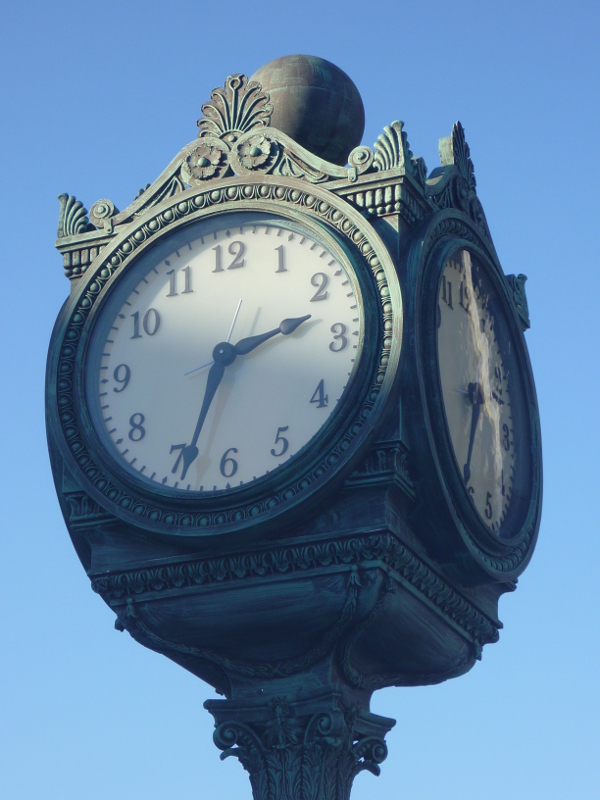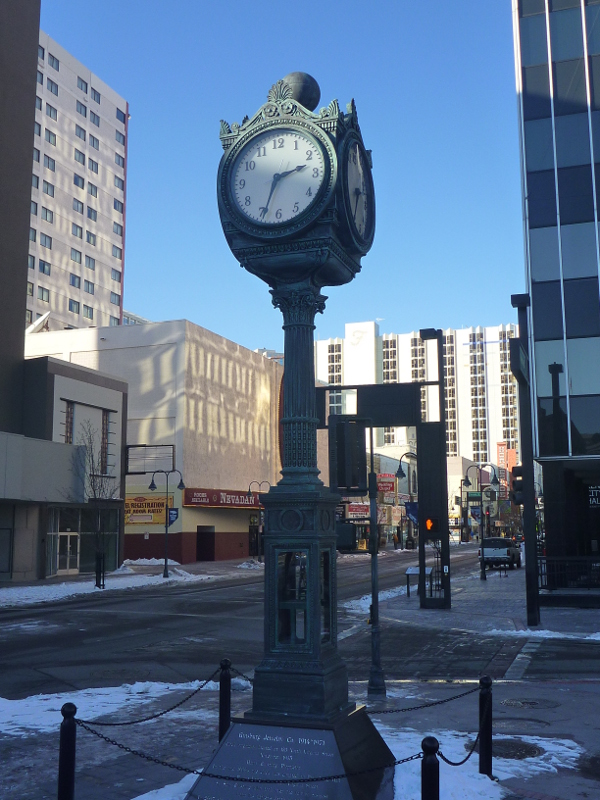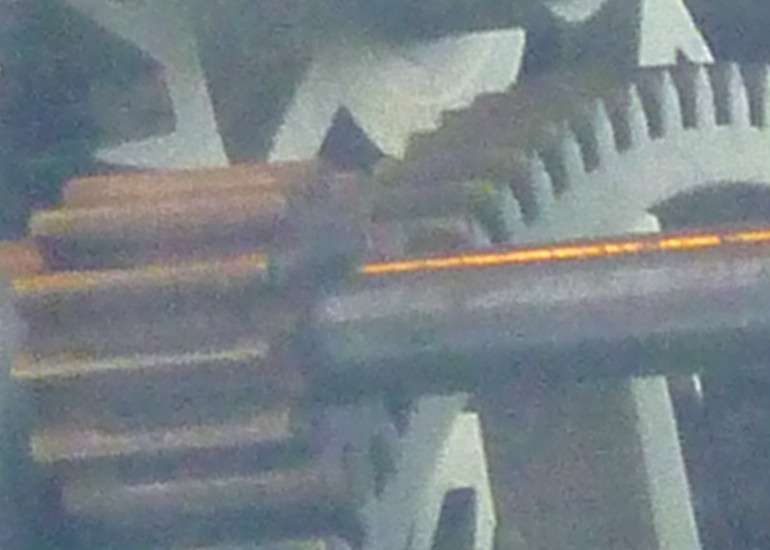
|

|

Four-faced, 16-foot-tall timepiece of Ginsburg Clock |

“Ginsburg Jewelry” Clock at Reno's City Plaza |

|
The historic, four-faced Ginsburg Clock was restored and relocated across from City Hall at the North Virginia/East First Street junction in downtown Reno, Nevada. The pedestal inscription explains that this was done to mark the anniversary of the Club Cal-Neva Casino on April 1, 2012. |
|
Underneath that text, you'll find clear and short:
A TIME FOR PEACE.
The pedestal has the geometric form of a frustrum of an upright
square pyramid. On one of its four trapezoidal faces you can
read the anniversary and peace notes. On another face, the
clock's history is summarized: This clock was once owned by
Harry Ginsburg, proprietor of the
Ginsburg Jewelry Company (1914-1971).
The clock stood at 133 North Virginia Street to promote the business.
After Harry Ginsburg's death in 1954, his son Sam took over
the family business.
In the mid 1960's, Sam Ginsburg
donated the clock to the Park Lane Mall on Plumb Lane and
South Virginia Street. In 2007, the clock was generously
donated to the City of Reno by M&H Realty Partners.
Historic and decoratively designed street clocks enjoy renaissance today. Although we carry watches and smart electronic devices to look up accurate time and synchronize our lives, we still love to get reminded of the eternity aspect of time. Time adds a further dimension to a place—especially when “announced” in multiple directions by an imposant timepiece such as the one of the Reno City Plaza clock. The Online Nevada Encyclopedia has an instructive entry on Reno's historic street clock. The article refers to the popularity of stand-alone clocks made by United States clockmasters between the mid-nineteenth century until the late 1930s. The mechanical design of these clockworks can be traced to the medieval tower clocks of Europe. |
|






